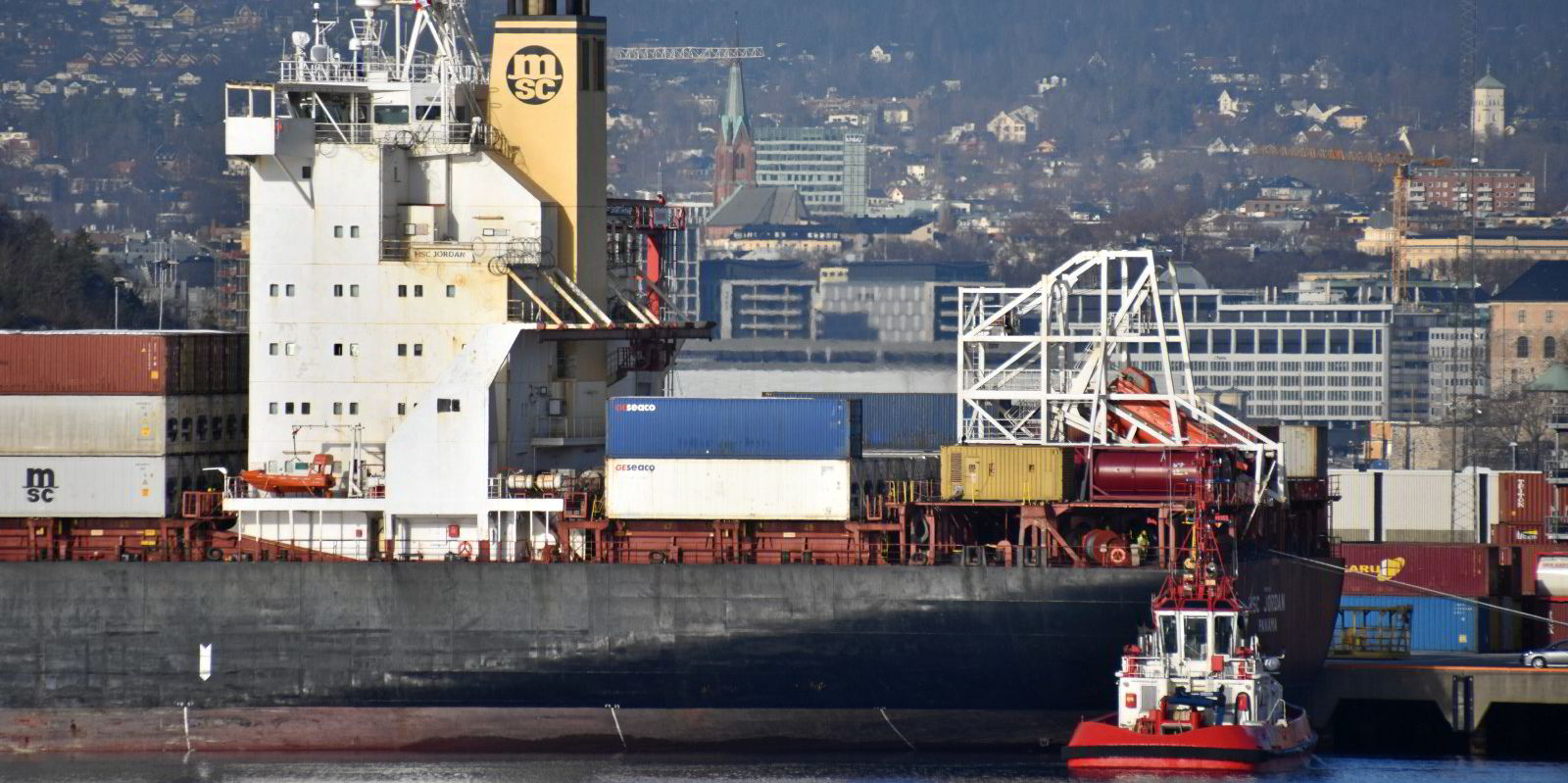New York-listed financial shipowner SFL Corp expects to purchase non-liner assets after a quarter marked by containership and car carrier transactions in a rising market.
Chief executive Ole Hjertaker told TradeWinds in an interview that SFL remains open to opportunistic deals in all sectors, and its containership portfolio remains basically unchanged despite the departure of 18 ships from the fleet of one major customer — Mediterranean Shipping Co (MSC).
On 18 August, the John Fredriksen-backed company reported a profitable second quarter with a $19.5m bottom line, and disclosed two newbuilding contracts with a price tag of $155m for two dual-fuel 7,000-ceu car carriers for an unnamed Asian-based client.
SFL has the lion's share of its cash flow coming from boxships right now, but the red-hot liner market means SFL is likely to go looking elsewhere to continue building its fleet.
Hjertaker told analysts who quizzed him following the results announcement that despite recent liner acquisitions, SFL is also looking at "opportunities in other sectors where there is less activity".
"What we have seen over time is that it is at the peak of the market that the capital markets are open and the banks will lend the most, so owners who focus on single segments are virtually programmed to make investments at the least optimal times," he said.
Separately, Hjertaker told TradeWinds that if a good liner deal came along, he would not say no.
"The best way to build up a diversified fleet is to look at every single deal individually, and even in peaking markets there could be attractive risk/reward opportunities," he said.
His largest shareholder continues to play a role in the company’s direction of its resources, in the form of briefings ahead of any major transaction — and Hjertaker said Fredriksen remains “extremely switched on”.
Previously in this quarter, SFL had announced secondhand sale-and-leaseback deals to supply two 6,800-teu ships to AP Moller-Maersk and two 14,000-teu ships to Evergreen Line.
Less significant than those deals, despite the number of units involved, was the departure of 18 ships in the fleet of MSC, which exercised purchase options to take them back.

Hjertaker describes the ships as feeder tonnage of around 25 years old. Historically, MSC typically runs its ships to an age of 27 to 30 years.
In its website fleet list, SFL had not even named the 18 ships individually.
“You could always fluff up your fleet list but there was no need,” Hjertaker told TradeWinds. “That acquisition was done at what was below recycling value at the time and was effectively a structured financing deal. All 18 vessels cost less than one large newer vessel.”
The Swiss-based line remains SFL’s biggest source of contracted revenue, with a 29% share, while Maersk accounts for 25% and Evergreen 11%. MSC does this through bareboat charters, and the other two companies do so via time charters.
Hjertaker said the departure of the 18 ships should have a positive net impact on his company’s environment, social and governance profile, with cash proceeds being invested in newer and more fuel-efficient vessels.
In addition to containerships, car carriers, tankers and bulkers, SFL has exposure to two rigs in the fleet of bankrupt Seadrill. Its current online fleet list numbers 74 ships and rigs.





